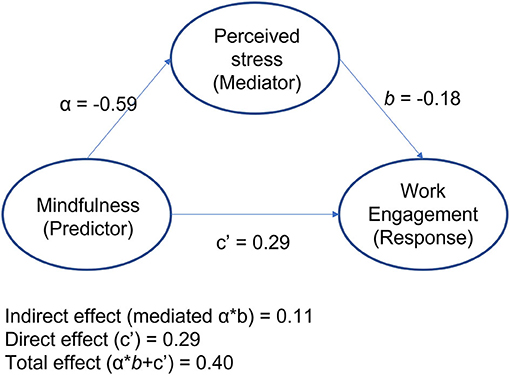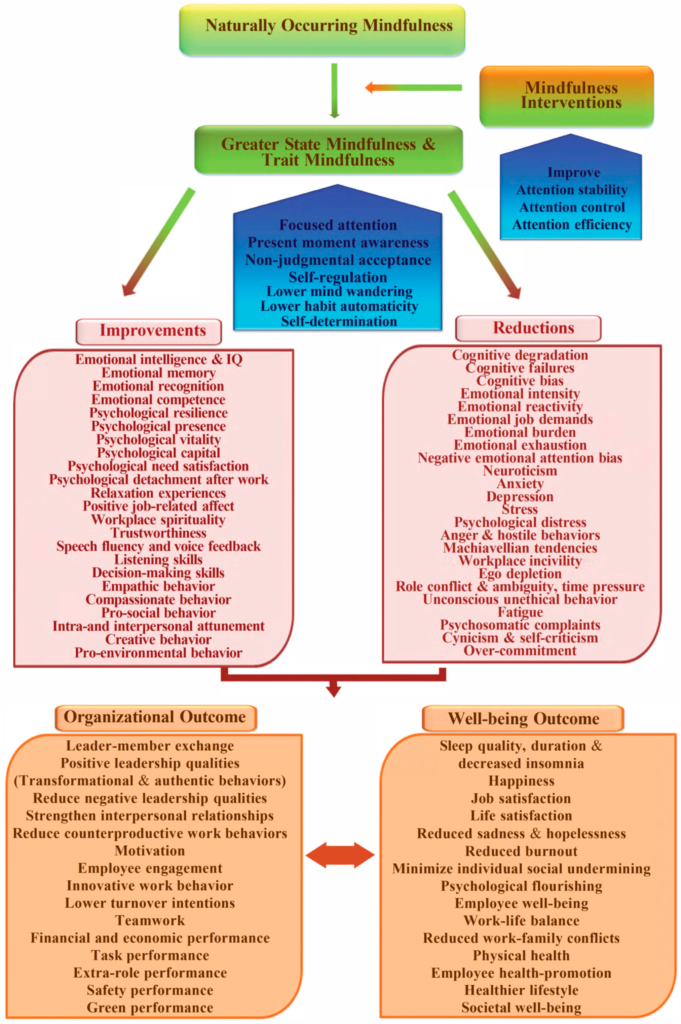The Impact Of Mindfulness On Stress Reduction In The Workplace
Have you ever had a stressful day at work? Maybe your boss was breathing down your neck, deadlines were piling up, and you felt like you were about to explode. We’ve all been there. But have you ever wondered if there’s a way to handle stress better? Well, let me tell you about the impact of mindfulness on stress reduction in the workplace. In this article, we’ll dive into how practicing mindfulness can help you navigate the challenges of your job with a little more ease.
Mindfulness, in its simplest form, is the practice of being fully present and aware in the present moment. It involves paying attention to your thoughts, feelings, and bodily sensations without judgment. By incorporating mindfulness techniques into your daily routine at work, you can reduce stress and improve your overall well-being. In fact, studies have shown that practicing mindfulness can lead to increased job satisfaction, better work performance, and lower levels of burnout. It’s not just about feeling zen, but actually improving your professional life. So, if you’re curious about how you can use mindfulness to conquer workplace stress, keep reading to learn more.

Introduction to Mindfulness
Defining mindfulness
Mindfulness can be defined as the state of being fully present and aware of the current moment, without judgment or attachment to thoughts or emotions. It involves intentionally paying attention to one’s thoughts, feelings, bodily sensations, and the surrounding environment. Mindfulness is often associated with practices such as meditation, breathing exercises, and yoga, but it is ultimately about cultivating a mental state that promotes calmness, clarity, and a sense of well-being.
History and origins of mindfulness
Mindfulness has roots in ancient Eastern philosophies and religions, particularly in Buddhism. It has been practiced for thousands of years as a means of developing wisdom, self-awareness, and compassion. However, it was not until the late 20th century that mindfulness gained significant attention in the Western world. Jon Kabat-Zinn, a professor of medicine, introduced mindfulness-based stress reduction (MBSR) as a structured program in the 1970s, which brought mindfulness into the realm of healthcare and psychology. Since then, mindfulness has become more mainstream and is now widely recognized for its potential benefits in various aspects of life, including the workplace.
Understanding Stress in the Workplace
Causes and consequences of workplace stress
Workplace stress can arise from various factors, including excessive workload, long working hours, lack of control over one’s job, unclear expectations, poor management, organizational changes, interpersonal conflicts, and a lack of work-life balance. When individuals experience chronic stress at work, it can take a toll on their physical and mental health. Common consequences of workplace stress include burnout, decreased productivity, low job satisfaction, increased absenteeism, conflicts with colleagues, and even physical ailments such as heart disease and hypertension.
Prevalence of stress in modern workplaces
Stress in the workplace is a significant issue that affects a large number of employees worldwide. According to a recent survey conducted by the American Institute of Stress, 80% of workers feel stressed on the job, with nearly half reporting they need help in managing stress. This prevalence of stress in modern workplaces highlights the need for effective strategies and interventions to address this issue and improve overall well-being and productivity.

The Benefits of Mindfulness in the Workplace
Reducing stress levels and promoting well-being
The practice of mindfulness has been shown to have significant benefits in reducing stress levels and promoting well-being in the workplace. Research suggests that regular mindfulness practice can lower perceived stress and cortisol levels, a hormone associated with stress response. By taking the time to cultivate mindfulness, individuals can develop a greater sense of calmness, resilience, and emotional balance, enabling them to better cope with the demands and pressures of their work.
Improving focus, attention, and cognitive function
Mindfulness has been found to enhance focus, attention, and cognitive function, which are essential skills for optimal performance in the workplace. Studies have shown that practicing mindfulness can improve working memory, attentional control, and decision-making skills. By training the mind to be more present and focused, individuals can better concentrate on the tasks at hand, leading to increased productivity and efficiency.
Enhancing emotional intelligence and interpersonal relationships
Mindfulness also plays a crucial role in developing emotional intelligence and fostering positive interpersonal relationships in the workplace. When individuals practice mindfulness, they become more attuned to their own emotions and those of others, leading to improved empathy, communication, and conflict resolution skills. This heightened emotional intelligence can contribute to a more harmonious and productive work environment, where colleagues feel understood, valued, and supported.
Mindfulness Techniques for Stress Reduction
Breathing exercises and meditation
Breathing exercises and meditation are fundamental techniques used in mindfulness practice to reduce stress and promote relaxation. By focusing on the breath, individuals can anchor their attention to the present moment, allowing the mind to become more calm and centered. Simple breathing exercises, such as deep belly breathing or counting breaths, can be done at any time and in any place to help manage stress and regain a sense of composure. Meditation, on the other hand, involves dedicating a specific period of time to sit quietly and observe the breath or other sensations, thoughts, and emotions that arise, cultivating a non-reactive and accepting attitude towards them.
Body scan and progressive relaxation
The body scan technique involves systematically bringing attention to different regions of the body, noticing any sensations or tensions, and allowing them to soften and release. This practice helps individuals become more grounded in their bodies and aware of any physical manifestations of stress. Progressive relaxation, on the other hand, involves consciously tensing and then relaxing specific muscle groups, promoting a deep sense of physical and mental relaxation. Both of these techniques can be beneficial in reducing stress and promoting a state of relaxation and well-being.
Mindful movement and yoga
Mindful movement practices, such as yoga or tai chi, can also be effective in reducing stress and promoting mindfulness in the workplace. These practices involve combining gentle physical movements with focused attention on the sensations and breath, allowing individuals to cultivate mindfulness while moving their bodies. Yoga, in particular, has been shown to have numerous benefits, including reducing stress, improving flexibility and posture, promoting relaxation, and increasing overall physical and mental well-being. Integrating mindful movement practices into the workday can help individuals recharge, increase energy levels, and improve overall productivity.

Implementing Mindfulness Programs in the Workplace
Training employees in mindfulness practices
To effectively integrate mindfulness into the workplace, it is essential to provide training and resources for employees to develop their mindfulness skills. Organizations can offer mindfulness workshops, courses, or retreats led by experienced instructors who can guide employees through various mindfulness practices. These programs can be tailored to the specific needs and schedules of employees and can be offered on-site or online. Providing ongoing support and opportunities for practice is key for individuals to continue incorporating mindfulness into their daily lives.
Creating a supportive and mindful organizational culture
Implementing mindfulness in the workplace goes beyond individual practices; it also involves creating a supportive and mindful organizational culture. Organizations that prioritize employee well-being and mental health foster an environment where mindfulness is encouraged and supported. This can be achieved by promoting open communication, providing opportunities for rest and rejuvenation, offering flexible working arrangements, and implementing policies that promote work-life balance. When mindfulness is woven into the fabric of the organization, employees are more likely to embrace it as part of their work experience.
Integrating mindfulness into daily work routines
To ensure that mindfulness practices become ingrained in the daily work routines of employees, it is important to create opportunities for their incorporation. This can include incorporating short mindfulness practices or moments of reflection into meetings or training sessions, providing designated quiet spaces for meditation or relaxation, or encouraging individuals to take regular breaks to engage in mindfulness activities. By integrating mindfulness into everyday work activities, individuals are more likely to experience the benefits and make it a sustainable part of their professional lives.
Case Studies: Successful Implementation of Mindfulness in Workplaces
Company A: Improving employee well-being and productivity
Company A, a multinational technology company, recognized the detrimental effects of stress on their employees’ well-being and productivity. They introduced a comprehensive mindfulness program, which included mindfulness training for all employees, as well as designated quiet rooms for meditation and relaxation. The program also incorporated mindfulness practices into team meetings and provided ongoing support for employees to continue their mindfulness journey. As a result, employees reported reduced stress levels, increased job satisfaction, and improved overall well-being. Additionally, productivity and team cohesion improved significantly, as employees were better able to manage stress and work collaboratively.
Company B: Reducing workplace conflicts and improving teamwork
Company B, a financial services firm, was grappling with frequent workplace conflicts and strained relationships among employees. They implemented a mindfulness program that focused on developing emotional intelligence and fostering positive communication. Mindfulness training was provided to all employees, with an emphasis on cultivating empathy, active listening, and non-reactivity. As a result, employees reported improved interpersonal relationships, reduced conflicts, and increased collaboration. The mindfulness program had a positive ripple effect on the overall work environment, leading to higher employee satisfaction and a more cohesive and productive team.

Challenges and Limitations of Mindfulness in the Workplace
Resistance and skepticism among employees
Implementing mindfulness programs in the workplace can face challenges due to employee resistance and skepticism. Some individuals may view mindfulness as a “soft skill” without tangible benefits, while others may perceive it as a religious or spiritual practice that conflicts with their beliefs. Overcoming these barriers requires education and awareness about the scientific evidence supporting mindfulness and its potential benefits. Providing accurate information and addressing misconceptions can help employees understand the practical applications of mindfulness in the workplace context.
Time and resource constraints for implementing mindfulness programs
Another challenge to implementing mindfulness programs in the workplace is the perceived lack of time and resources. Many organizations are focused on meeting immediate business demands and may view mindfulness as a time-consuming and non-essential activity. To address this challenge, it is important to communicate the ROI (return on investment) of mindfulness programs, highlighting the potential long-term benefits such as increased productivity, reduced absenteeism, and improved employee well-being. Flexibility in program design and implementation can also help accommodate employees’ schedules and make mindfulness more accessible to all.
Addressing Concerns and Overcoming Barriers
Providing education and awareness about mindfulness
To address resistance and skepticism among employees, organizations can provide education and awareness initiatives that promote understanding of mindfulness. This can include workshops, seminars, or informative materials that present the scientific evidence behind mindfulness and its potential benefits in the workplace. It is crucial to convey that mindfulness is a practical skill that can enhance well-being and performance, regardless of individual beliefs or backgrounds.
Flexibility in program design and implementation
To overcome time and resource constraints, organizations can design mindfulness programs that are flexible and adaptable to employees’ needs and schedules. This can include offering multiple formats, such as in-person sessions and online resources, to cater to different learning preferences. Additionally, incorporating mindfulness into existing activities or incorporating shorter practices into the workday can make mindfulness more manageable and integrated into daily routines.
Incorporating feedback and continuous improvement
Addressing concerns and overcoming barriers requires an ongoing commitment to gathering feedback and continuously improving mindfulness programs. Organizations can create opportunities for employees to provide feedback on the effectiveness of the programs and solicit suggestions for improvement. By incorporating employee input, organizations can ensure that mindfulness initiatives are relevant, engaging, and tailored to the specific needs of their workforce.

Measuring the Impact of Mindfulness on Workplace Stress Reduction
Quantitative measures of stress levels and well-being
To measure the impact of mindfulness on workplace stress reduction, organizations can use quantitative measures such as self-report questionnaires or physiological indicators. Surveys and questionnaires can assess employees’ perceived stress levels, job satisfaction, and well-being before and after participating in mindfulness programs. Physiological measures, such as cortisol levels or heart rate variability, can provide objective data on the physiological effects of mindfulness on stress response. By collecting and analyzing this data, organizations can gain insights into the effectiveness of their mindfulness initiatives.
Qualitative assessments of employee experiences
In addition to quantitative measures, qualitative assessments can provide valuable insights into the experiences and perceptions of employees regarding mindfulness practices. Focus groups, interviews, or open-ended survey questions can capture employees’ thoughts, emotions, and reflections on the impact of mindfulness on their well-being and stress levels. Qualitative data can provide a deeper understanding of the personal experiences and transformations resulting from mindfulness practices.
Long-term evaluation of mindfulness programs
While short-term evaluations can provide immediate feedback on the impact of mindfulness programs, it is essential to conduct long-term evaluations to assess the sustainability and long-lasting effects of mindfulness initiatives. Longitudinal studies that follow participants over an extended period can measure the persistence of the benefits and track changes in stress levels and well-being. This long-term evaluation allows organizations to make informed decisions about the continuation and refinement of their mindfulness programs.
Ensuring Sustainable Mindfulness Practices in the Workplace
Leadership support and commitment
Sustainable mindfulness practices in the workplace require leadership support and commitment. When leaders prioritize and model mindfulness, it sends a clear message to employees that their well-being is valued and supported. Leaders can incorporate mindfulness into their own work routines, openly share the benefits they have experienced, and encourage their teams to engage in mindfulness practices. This leadership support creates a positive organizational culture that nurtures sustainable mindfulness practices.
Integration of mindfulness into performance evaluations
To ensure the sustainability of mindfulness practices, organizations can integrate mindfulness into performance evaluations and feedback processes. This can involve recognizing and rewarding individuals who demonstrate the application of mindfulness skills in their work, such as maintaining focus, managing stress, and fostering positive relationships. By aligning incentives and recognition with mindfulness practices, organizations reinforce the importance of mindfulness as a valuable skill in the workplace.
Providing ongoing resources and support
To sustain mindfulness practices in the workplace, it is essential to provide ongoing resources and support for employees. This can include continued access to mindfulness training, workshops, or online resources, as well as opportunities for group practice or peer support. Organizations can also designate mindfulness champions or provide mentorship programs to support individuals in their mindfulness journey. By continuously nurturing mindfulness practices, organizations create a supportive environment that encourages individuals to prioritize their well-being.
The Role of Mindfulness in Promoting Work-Life Balance
Reducing work-related burnout and improving job satisfaction
One of the key benefits of mindfulness in the workplace is its potential to reduce work-related burnout and improve job satisfaction. Mindfulness practices allow individuals to cultivate a greater sense of self-awareness, enabling them to recognize signs of burnout and take proactive steps to prevent or manage it. By creating a work environment that promotes work-life balance and values self-care, organizations can support employees in achieving greater satisfaction and fulfillment in both their professional and personal lives.
Enhancing personal well-being and relationships outside of work
Mindfulness also extends beyond the workplace, enhancing personal well-being and relationships outside of work. When individuals regularly practice mindfulness, they develop skills such as stress management, emotional regulation, and empathy, which positively impact their personal lives. Mindfulness can improve personal relationships by fostering effective communication, empathetic listening, and a greater sense of presence with loved ones. By promoting mindfulness in the workplace, organizations contribute to the holistic well-being of their employees.
Ethical Considerations in Mindfulness Programs
Respecting individual beliefs and cultural diversity
When implementing mindfulness programs in the workplace, it is crucial to respect individual beliefs and cultural diversity. Mindfulness is a secular practice that can be beneficial for individuals of various religious or spiritual backgrounds. Organizations should emphasize inclusivity and ensure that mindfulness programs are presented in a way that respects diverse perspectives and beliefs. Sensitivity to cultural differences and the adaptation of mindfulness practices to specific cultural contexts is essential for creating an inclusive and supportive environment.
Maintaining confidentiality and privacy
Confidentiality and privacy are fundamental ethical considerations when implementing mindfulness programs in the workplace. Individuals should feel safe in sharing their experiences and insights without the fear of judgment or repercussion. Organizations should clearly communicate how personal information will be handled and ensure that participants’ privacy is protected. This includes maintaining confidentiality regarding individuals’ participation in mindfulness programs and respecting their boundaries.
Future of Mindfulness in the Workplace
Integration of technology and digital mindfulness tools
The future of mindfulness in the workplace is likely to involve the integration of technology and digital mindfulness tools. With the increasing prevalence of remote work and digital communication, technology can play a crucial role in making mindfulness practices more accessible to a wider audience. Mobile apps, online platforms, and wearable devices can provide individuals with guided meditation sessions, reminders for mindfulness practice, and real-time feedback on their progress. Embracing technology can enhance the reach and impact of mindfulness initiatives and support individuals in developing sustainable mindfulness habits.
Advancements in research and evidence-based practices
As mindfulness gains more attention in the workplace, it is expected that there will be advancements in research and evidence-based practices. Ongoing scientific studies can further explore the specific benefits of mindfulness in different work settings and industries. This research can inform the development of targeted mindfulness interventions and guide organizations in implementing evidence-based mindfulness programs. With a solid research foundation, mindfulness can continue to evolve as a valuable tool for stress reduction and overall well-being in the workplace.
Expanding mindfulness initiatives to different industries and sectors
While mindfulness has gained traction in certain sectors such as technology, healthcare, and education, there is potential for its expansion to other industries and sectors. The principles and techniques of mindfulness can be adapted and applied to various work environments, including manufacturing, retail, and professional services. By tailoring mindfulness programs to the specific needs and challenges of different industries, organizations can empower employees across diverse sectors to benefit from mindfulness practices and experience improved well-being and performance.
Conclusion
Summary of the impact of mindfulness on stress reduction in the workplace
Mindfulness has increasingly gained recognition as a powerful tool for stress reduction in the workplace. By cultivating mindfulness, individuals can develop the skills and mindset needed to cope with the demands of modern work environments and enhance their overall well-being. Through various mindfulness techniques, such as breathing exercises, meditation, body scan, and mindful movement, individuals can reduce stress levels, improve cognitive function, and enhance emotional intelligence. Implementing mindfulness programs in the workplace requires training employees, creating a supportive organizational culture, and integrating mindfulness into daily work routines.
Call to action for organizations to prioritize mindfulness practices
Given the prevalence and impact of stress in the workplace, it is crucial for organizations to prioritize mindfulness practices. By investing in mindfulness programs, organizations can promote employee well-being, reduce stress-related issues, and improve overall productivity and job satisfaction. The future of mindfulness in the workplace involves embracing advancements in technology, conducting research to further understand its benefits, and expanding mindfulness initiatives to different industries and sectors. By making mindfulness a priority, organizations can create a healthier, more engaged, and resilient workforce.

